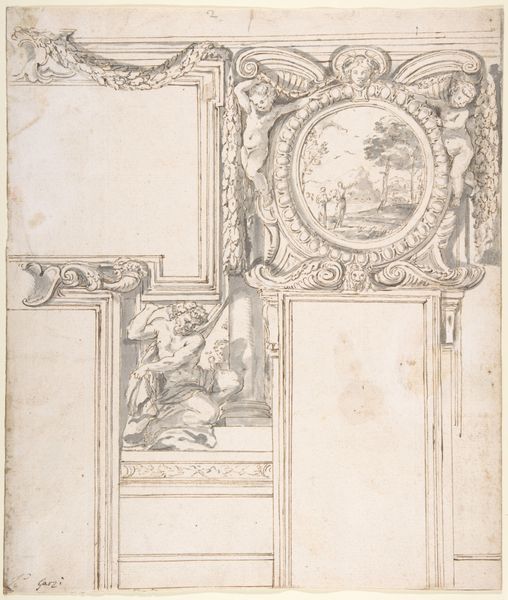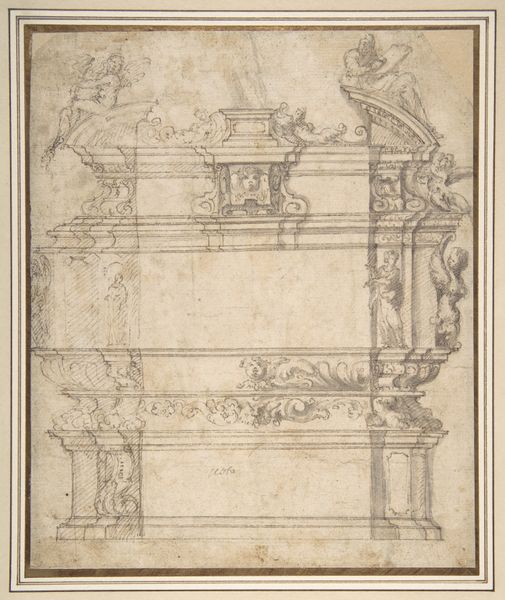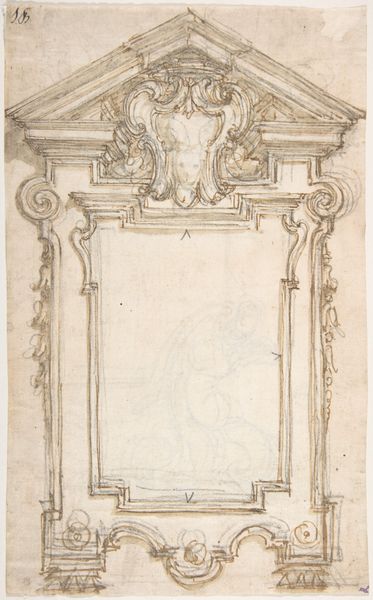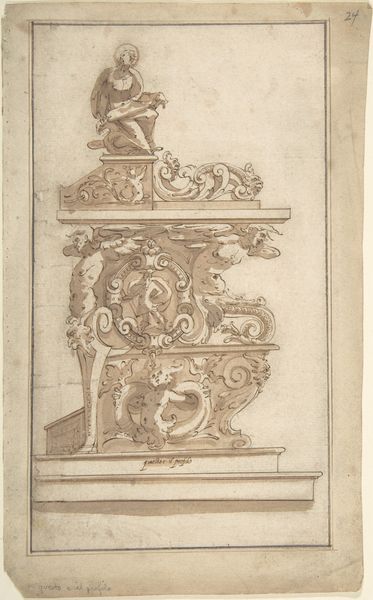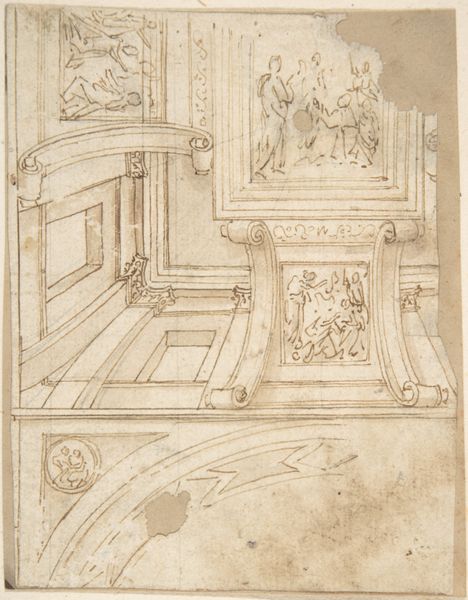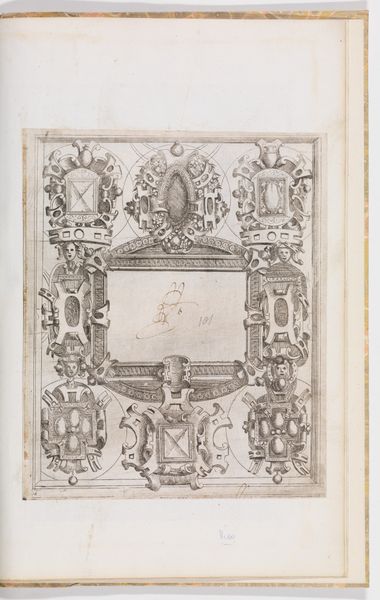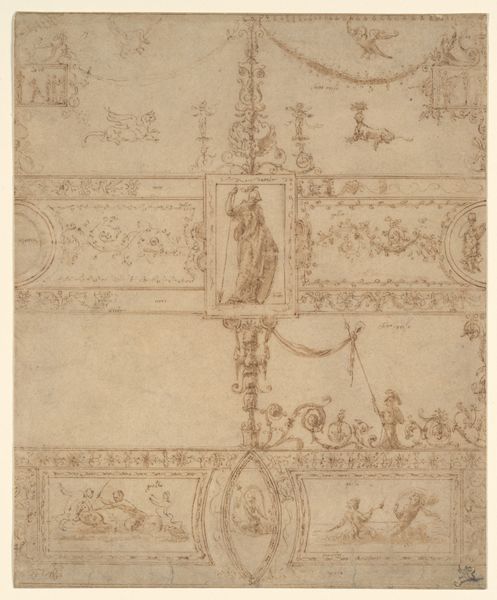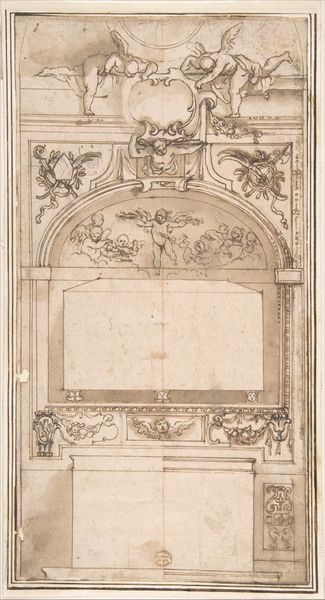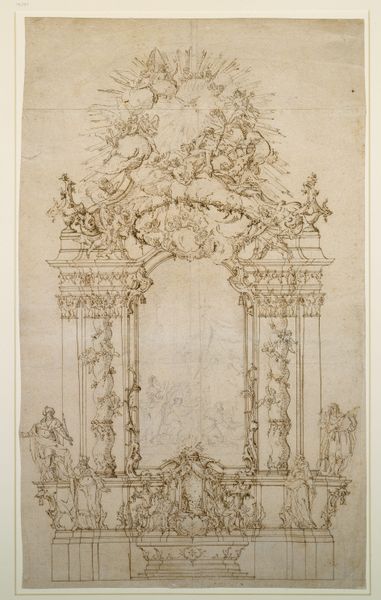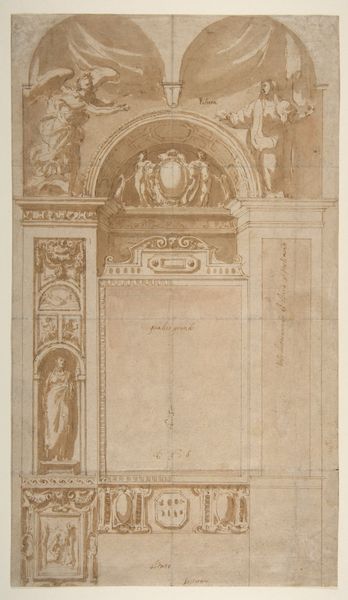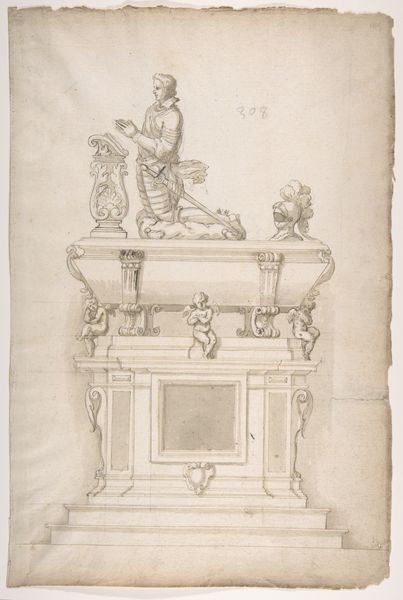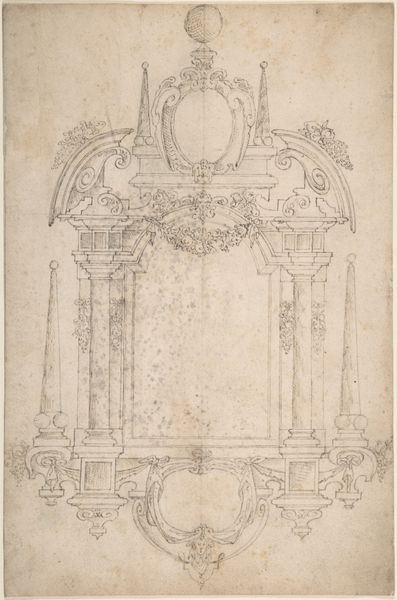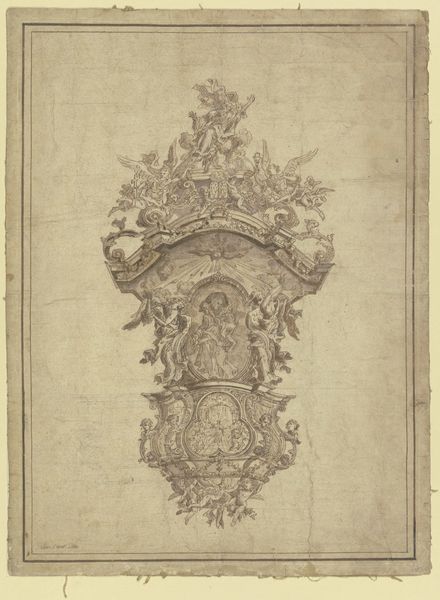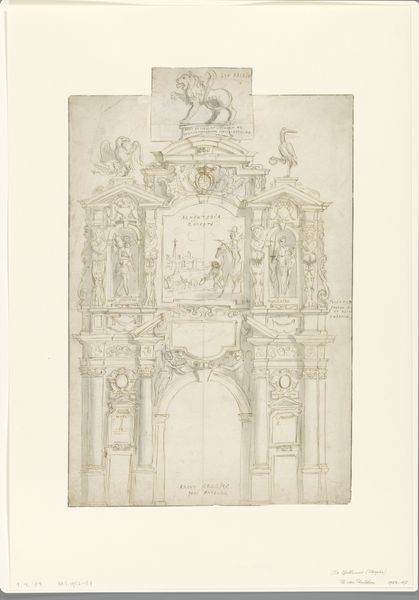
A Tabernacle Containing a Papal Escutcheon Supported by Angels 1533 - 1545
0:00
0:00
drawing, print, pen
#
drawing
#
allegory
# print
#
pencil sketch
#
etching
#
mannerism
#
11_renaissance
#
pen
#
angel
Dimensions: 17-7/8 x 13-9/16 in. (45.4 x 34.4 cm)
Copyright: Public Domain
Editor: So, here we have Giulio Romano's "A Tabernacle Containing a Papal Escutcheon Supported by Angels," dating from 1533 to 1545. It's a pen and ink drawing, and it feels incredibly intricate, almost like a design for a monument. How do you approach something so rich in detail? Curator: As a materialist, I immediately consider the pen and ink. What kind of labor went into producing this drawing? Who would have been involved in making the ink itself? What social dynamics are reflected in its use for a Papal commission? Editor: That's interesting; I hadn't thought about the ink itself. I was more focused on the composition. The angels and papal symbols, it seems like classic Renaissance imagery. Curator: True, but let’s dig deeper. Consider the materiality of the escutcheon—the specific materials used in its actual fabrication were carefully chosen. Who controlled the mines, the quarries, the workshops where these materials were processed? And how did this drawing function as a tool within that economic system? Was it a blueprint for artisans? A demonstration of skill for patronage? Editor: So, you're saying the drawing is less about religious symbolism and more about the socio-economic realities of its creation? The labor and resources needed to realize it? Curator: Exactly! Mannerism, the style, disrupts established norms, pushing artistic boundaries. But we should investigate how its very creation relied on material conditions and existing power structures to subvert its traditional visual cues. Can this emphasis of surface decoration and visual display distract from the material conditions of devotional objects? Editor: I see. It’s a way of looking beyond the surface image, analyzing the historical and economic layers that made the artwork possible. I'll definitely be thinking more about materiality from now on! Curator: Excellent! Looking at the materials and labor involved provides a richer and more complex understanding of any artwork.
Comments
No comments
Be the first to comment and join the conversation on the ultimate creative platform.
